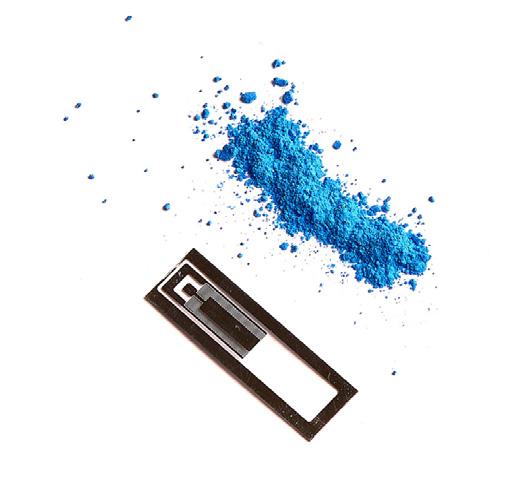INDUSTRY NEWS
Sound Waves Power New Advances in Drug Delivery and Smart Materials Source: Sally Wood
Researchers have revealed how high-frequency sound waves can be used to build new materials, make smart nanoparticles and deliver drugs to the lungs for painless, needle-free vaccinations. While sound waves have been part of science and medicine for decades – ultrasound was first used for clinical imaging in 1942 and for driving chemical reactions in the 1980s – the technologies have always relied on low frequencies. But research undertaken at RMIT University shows how high frequency sound waves could revolutionise the field. A recently-published review in Advanced Science showed the effects of highfrequency sound waves on materials and cells, like molecules that can spontaneously order themselves after being hit with the sonic equivalent of a semi-trailer. Distinguished Professor Leslie Yeo and his team spent over a decade researching the interaction of sound waves at frequencies above ten MHz with different materials. But Professor Yeo said they are only now starting to understand the range of strange phenomena they often observe in the lab. “When we couple highfrequency sound waves into fluids, materials and cells, the effects are extraordinary. “We’ve harnessed the power of these sound waves to develop innovative biomedical technologies and to synthesise advanced materials,” he said. The research could be used in a variety of applications, like drug delivery to the lungs, which could deliver life-saving drugs and vaccines by inhalation, rather than through injections. It could also encapsulate drugs in special nano-coatings to protect them from deterioration, control their release over time and ensure they precisely target the right places in the body like tumours or infections. 20 | APRIL 2021
In addition, the breakthrough could change smart materials – leading to sustainable production of super-porous nanomaterials that can be used to store, separate, release and protect almost anything. The team’s discoveries have also changed their fundamental understanding of ultrasound-driven chemistry – and revealed how little they really knew.
Distinguished Professor Leslie Yeo. Image credit: RMIT University. Below: The patented ‘Respite’ nebuliser uses high-frequency sound waves to precisely deliver drugs to the lungs. Image credit: RMIT University.
“Trying to explain the science of what we see and then applying that to solve practical problems is a big and exciting challenge,” Professor Yeo said. Ultrasound has traditionally been used at low frequencies – around ten kHz to three MHz – to drive chemical reactions, a field typically known as ‘sonochemistry’. At these low frequencies, sonochemical reactions are driven by the violent implosion of air bubbles. But the process, known as cavitation, results in huge pressures and ultrahigh temperatures – like a tiny and extremely localised pressure cooker. However, when the frequency is increased, the reactions change entirely. As the research team transmitted high frequency sound waves into various materials and cells, the researchers saw behaviour that had never been observed with lowfrequency ultrasound. “We’ve seen self-ordering molecules that seem to orient themselves in the crystal along the direction of the sound waves,” Professor Yeo said. “The sound wavelengths involved can be over 100,000 times larger than an individual molecule, so it’s incredibly puzzling how something so tiny can be precisely manipulated with something so big. “It’s like driving a truck through a random scattering of Lego bricks, then finding BACK TO CONTENTS
The pioneering Micro/Nanophysics Research Laboratory team. Image credit: RMIT University. Left: An acoustically-created MOF, with the microchip that produced the high-frequency sound waves used in the process. Image credit: RMIT University.
those pieces stack nicely on top of each other – it shouldn’t happen,” he explained. The team at the Micro/Nanophysics Research Lab at RMIT’s School of Engineering, is one of a limited number of research groups in the world who are bringing together high-frequency sound waves, microfluidics and materials. Professor Yeo said the research challenges long-held physics theories, and opens up a new field of ‘high frequency excitation’ in parallel to sonochemistry. “The classical theories established since the mid-1800s don’t always explain the strange and sometimes contradictory behaviour we see – we’re pushing the boundaries of our understanding,” he said. The research is supported through Australian Research Council Discovery Project grants. WWW.MATERIALSAUSTRALIA.COM.AU

















